1963. A pivotal year in horology history. It is the year that undoubtedly marks the last great epoch of the “utilitarian” mechanical horology. At this time is created the legendary chronograph Heuer Carrera.
Jack Heuer transcends the Helvetic neo-classicism of the 50s to introduce functionalism into the chronograph. The reason behind this decision? Mechanical sports.
The connivances between mechanical sports and Tag Heuer are old and intimately linked to the La Chaux-de-Fonds’ brand history. This adventure began before the Great War. In 1963, Tag had already been manufacturing pocket watches dedicated to sports timing for more than fifty years. For instance, the “Mikrographe” vintage was manufactured at the start of the 20th Century or, some years before the Carrera, the “Rally Master”, a dashboard chronograph.
As an opposition to what the neophyte may presume, the Carrera name is not linked to Porsche; it was rather inspired by the mythical race of the 50s, the Carrera Panamericana AKA “Pan Am”. What can be seen as an astonishing paradox is that before 1963, this event had not occurred since 1955, following a decision of Mexican authorities. This interruption was the result of the psychological trauma caused by the tragic accident of the Mercedes 300 SLR at the 24H of the Mans 1955… However, Jack Heuer turned out to be a visionary by betting on the resurrection of this anthology race... The event is back on track since 1988.
It is this vision, this intuition, this understanding which are the forging factors of the Carrera history…
Heuer Carrera 45 Dato "Cobra Shelby" 3147
Likely to be seen as something minor nowadays, one was aware that even the most minor detail was relevant in performance research at the time.
Heuer applied the solutions giving a maximum readability to military watches of the interwar period to sports watches: greater aperture and black dial for a maximum of contrast.
The first reference of the Carrera is the 2447. Bicompax, panda or full black, it is a round watch of 36mm (which was relatively big for the time). Animated by a Valjoux 72, a standard movement during the after-war; its frequency is at 18000 vph for 45 hours of power reserve.
It presents numerous similarities with the Rolex “Pré-Daytona” ref. 6238: the calibre, the dial and the push-pieces. What is even better is that the future 6239, just like the Carrera, will adopt the name of an automobile event across the Atlantic: Daytona.
However, even if the Daytona and the Carrera started off at almost the same point (in the 60s, the products were less “identity-oriented” than today) and were presented in the same year (the Daytona also celebrates its 50 years this year), they had diametrically opposed destinies.
On the one hand, the Daytona evolved very little, as much in terms of motorization as aesthetics, since Rolex privileged reliability and durability above all.
On the other hand, the Carrera became a permanent, aesthetic and technical laboratory.
Here, we have to make reference to the Heuer Carrera 45 Dato « Cobra Shelby » 3147. In fact, in 1963, it was rare to have “branded” watches (the 70s and 80s were the Golden Age of the “branded” watches).
It is thus due to the logo of the British constructor that the 3147 will be of more interest to us than the 2447.
Despite the legitimacy and the explosive potential of a partnership between the AC Cobra and Tag Heuer niche constructor, the Dato 45 was not a commercial watch.
In the 60s, Carol Shelby, ex-racing driver (he won the 24h du Mans in 1959 Mans with Aston Martin), decided to create the American racing car; he turned to Ford, which was able to supply the motor and the money and was helped by AC, a British constructor which owned the European know-how in terms of chassis.
The AC Cobra was born; it would know a qualified success: sales during the 60s did not exceed 1000 copies, divided into diverse versions.
The car is too early and too pointed, it precedes the Muscle Cars era; however, the latter will aim higher in the objective set by the Cobra Shelby: be as powerful as the GTs of the moment for much less money.
Shelby had opted for a compromise between the dynamic qualities of the automobile and its cost. The Muscle Cars would be much more radical, leaving behind all equilibrium in terms of behavior, in favor of atmospherics V8s under steroids, at dumped prices…
To motivate sales forces, the Ford group asked Jack Heuer to manufacture its Dato 45, declined into two series : the first (1966-67), Bicompax and the second (1968-69) more radical, Monocompax, the latter consisting of the AC Cobra initials.
It is obviously this version which will be of interest here since it prefigures various heavy trends through its aesthetics. First and foremost, the automobile/horology partners which are henceforth the forgotten passage of any large-scale watchmaking firm.
The dial is decorated with an automobile brand’s logo (a first?!) And what a logo! AC’s Cobra is incredibly aggressive and perfectly corresponds to Shelby’s sports vocation: combine the best of European and American automobile.
Then, the watch proposes a big date and a big white timer of graduated minutes up to 45. Obviously, everything is done in the scope of a maximum readability: with its great aperture at the dial, the watch cuts more than the announced 36mm.
The case is the embodiment of simplicity; its horns are very long which is logical given its size. Besides, the current Carreras will conserve this characteristic but with a greater-sized case.
Furthermore, the watch is motored by an unusual caliber (in the Carreras only; it was relatively common at the time) of manual chronograph: the Landeron 189, 31mm in diameter for 6.85mm in width. It has a frequency of 18000 vibrations per hour for 42 hours of power reserve.
It is to be noted that the steel case resonates quite a lot and that the sound characteristic of 2.5Hz is quite audible for such a small watch.
If the Heuer Carrera 45 Dato “Cobra Shelby” is almost impossible to find by chance, you may find a 45 Dato without logo for approximately 3’500 CHF…
Which is much less expensive than an original Cobra Shelby, because let’s admit it, it is much more simple (and economic!) to wear a vintage watch than to drive an appropriate car.
Heuer Skipper 7754 « Skipperera »
Another model which is slightly off-beat but very much iconic of the creative medium that defines this series is the Skipperera. The Skippers are a bit difficult to classify in the Heuer lines, as they are sometimes Autavia and sometimes Carrera. Experts air varying opinions about it…
As far as the aptly named “Skiperrera” presents a Carrera case, one can consider that it is a full Carrera.
The interest of this watch lies in its aesthetics. It neither distinguishes itself by its case, which is the standard version of the Carreras, neither by its calibre, a Valjoux 7730.
However, before focusing on the dial, it is useful to linger on this calibre a bit. The Valjoux 7730 is a calibre of manual chronograph having a frequency of 18000 vibrations per hour for 45 hours of power reserve, it measures 31mm on 6, that is, almost the same dimensions as the Landeron 189.
One will note that at the time, the size ratio of the caliber/size of the case was different from that of today. Back then, like sports cars’ motors, big calibers were cased up in small cases, at shoehorn.
What makes the particularity of this 7730 (which is probably the reason for his choosing this Skipper) is that it offered the possibility to display 30 or 45 minutes on the sub-dial at the 3 o’clock position. And here, Heuer had driven this function into a corner: by modifying a wheel, it was possible to display only 15 minutes by thirty jumps of thirty seconds.
Why is that? The answer is, as always, that it was for this famous countdown of the regatta launching. One will equally note that the minutes’ timer is graduated in the inverted direction: it is launched 15 minutes before the regattas start, the last third indicating the “warm-up” of the event.
However, the main interest of the watch does not concern the above but rather the dial, which is one of the most beautiful that I have ever held. The dials from that epoch are of a great quality and are no less appealing than the current productions. The reliefs are qualitative, the textures very clean and above all they grow old in a very good way, of which the good quality of the epoch’s lacquer is proof.
The colour scheme of this Carrera 7754 is perfect: night blue, almond green, orange, in ideal proportions. In a visionary way, it synthesises everything that was best made in sports and summer dials of the next 40 years. Night blue for looking good, orange for relaxation and almond green for nostalgia.
Moreover, the very streamlined context of the Carrera (white railroad, index and simple hands) further highlights the colour scheme.
The collectors are not wrong; it is approximately quoted the double of a Carrera from that time, often as from 7’000 CHF.
Heuer Carrera « Automatic 70’ » 110.253, Côte de Genève
Directly moving on to the year 1978, we will interest ourselves with the Heuer Carrera 110.253 since the latter joins numerous emblematic elements of the 70s’ Carrera.
The first major change was the case: it became barrel, was enlarged by 2mm and lost its long horns, very characteristic of the 70s. For the purists, it is undoubtedly slightly shocking; so much as this model distanced itself from the 60s’ models. However, in opposition to a Daytona, which is monolithic by vocation, it is a laboratory; it is thus legitimate that its creators attempted to change the shape of its case.
From a personal point of view, I prefer the 60s’ case due to the fact that its streamlining seems completely achieved to me. Here, the case is very sympathetic, very funky but slightly clumsier than the one from the 60s. While the 60s’ case was the avatar of Jack Heuer’s modernism passion, the 70s’ case ensued from a simplification wish of a case already very streamlined, of postmodernism all in all… Consequently, the case called “automatic 70’” has two advantages: its more solid horns and its superior diameter; as a result, these Carreras seem much bigger on the wrist than their predecessors.
It seems that Tag Heuer has made the same choice for its contemporary watches, in preserving the 60s’ case shape (this will further be developed at the end of the article).
If the case has been named «Automatic 70’», it must be known that a good deal of the watches it equips are manual!
In fact, the 70s are the time at which automatic chronographs appeared right in the middle of the quartz crisis… Between financial and suppliers problems, reliability issues of the automatic chronographs, a great deal of the Carreras from the 70s were equipped with manual movement.
However, this is not the case for this 110.253, which is equipped with a variant of the legendary Heuer Buren Calibre 11: the vintage calibre 12.
The calibre 12 is thus an automatic chronograph with 21600 vibrations per hour, contrary to the vintage calibre 11, with an intermediary frequency of 19800 vibrations per hour. The caliber has a 42-hour power reserve and measures 31mm for 7.7 in width.
It has been nicknamed «Chronomatic» and the oscillating mass will not be visible on the photos: which is normal since it has been hidden by the chronograph’s mechanism.
Like the Calibre 11, the vintage calibre 12 is a Buren 1281 with a Dubois Depraz 8510 chronograph module.
Nevertheless, if it is more classic in its frequency, it is also more legitimate: a six jumps per seconds basis is the most legitimate in a sexagesimal time system.
Last detail, the crown has been fitted at the 9 o’clock position but the push-buttons (less protruding than that of the 60s’ models, alas) are in their usual position, namely at the right of the case. The contrary might have been more ergonomic, it seems more instinctive to activate a chronograph with the right hand’s thumb rather than with the index…
On the dial’s side, like the other vintage Carreras, it is sportive classicism with a touch of madness, the whole served by an execution level which is no less appealing than the most beautiful current productions.
Proof of this? The dial is crossed by three big blue Côtes de Genève, very well made, the black sub counters almost break its harmony. In fact, the latters are flat and matt with white indexes. However, despite the beauty of its dial, this Carrera 110.253 is a tool watch, thus the functional aspect prevails.
Besides, the whole of the index/hands remains very classic, polished steel, streamlined design. Priority is given to efficiency.
It is not very hard to find one at approximately 2’500 CHF, which isn’t much if the dial’s execution quality and the embedded legendary movement are taken into consideration.
Heuer Carrera « Automatic » 510.511, military aviation
Just like the Skipperera, the 510.511 is a rarity, outside the Carrera series. So why is this piece being described?
Contrary to the Skipperera, it is not the most beautiful of the Carreras, but its technical interest is enormous.
As an introduction, it is worth knowing that this watch has a false twin, the 510.513, identical with a dial presenting blue Côtes de Genève arranged horizontally. Unfortunately, this piece was not available at the Tag Heuer museum where the photos of this reporting have been taken.
The watch exists in two versions: one in steel (ref 510.523), and one in PVD steel, this latter finish reinforcing its military aspect. The case takes up the design of the « Automatics 70’ » (even if the watch dates from 1984), but it is slightly bigger, with 40mm in diameter. The watch is water resistant to 100 meters and the push-pieces are of the right size.
This watch’s interest resides in its caliber: back then, Lemania was not in the Swatch Group circle (Lemania’s industrial tool served to build the Breguet firm) and produced numerous watches and calibers to the destination of armed forces.
Thus, the legendary Lemania 5100 which equips this Carrera 510.511 is an automatic chronograph mechanism of second generation intended for military aviation, including fighter pilots. It is why this movement presents an extraordinary resistance to the accelerating forces (11G) and to strong decelerations (7G).
It may be used for several years without service and is exceptionally robust. Its construction is unusual, the movement is structured around pillars, like a building and has some nylon pieces (which was trendy at the time…)
It has a frequency of 28800 vibrations per hour for 48 hours of power reserve and measures 31mm for 8.2, thus slightly bigger than a 7750.
Many wrote that it is not very beautiful. It is certainly not the incarnation of sex-appeal, but apart from the El Primero (Calibre 36 at Tag Heuer), the automatic chronographs’ movements from the years 70-80 were much less beautiful than the manual chronographs’ calibers of the after-war.
Moreover, this movement has several functions. The most noteworthy and playful is the central minutes’ timer, materialized by the aeroplane-shaped orange hand. The watch has four hands which pass through the central cannon: hour, minute, chrono second and chrono minute.
In addition to the 60 seconds and minutes at the center, the chronograph indicates the twelve hours cumulated at the 6 o’clock position, the 24h time at the 12 o’clock position, the small second at the 9 o’clock position and finally the date at the 3 o’clock position. Even if it is relatively charged, it is no less readable.
A relatively rare and totally mythical watch, which can be found at approximately 3’500 CHF, which is completely correct given the product’s quality. I cannot advise strongly enough the 510.513 if you bear it an interest, less military-aviation in its look and more Funky-Carrera.




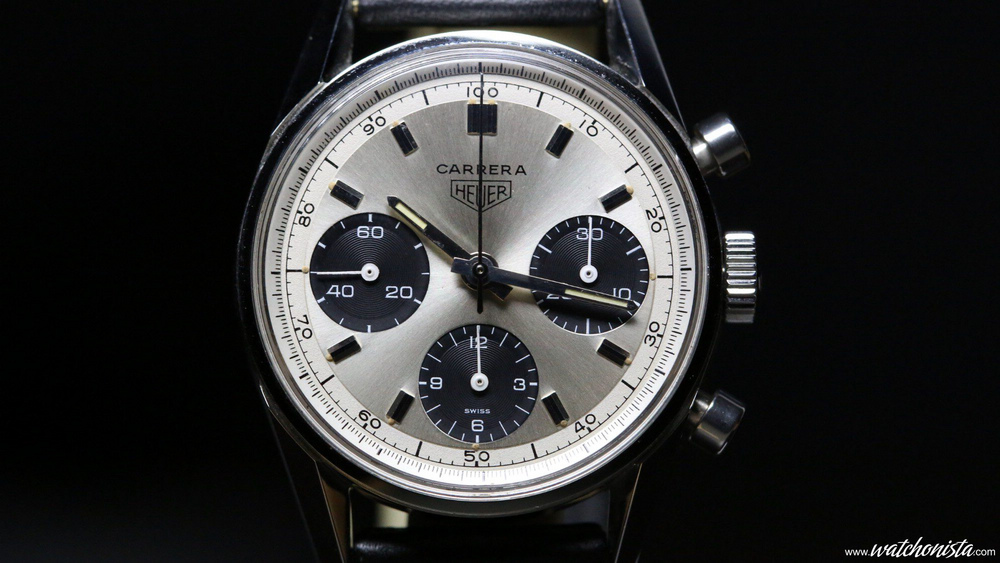
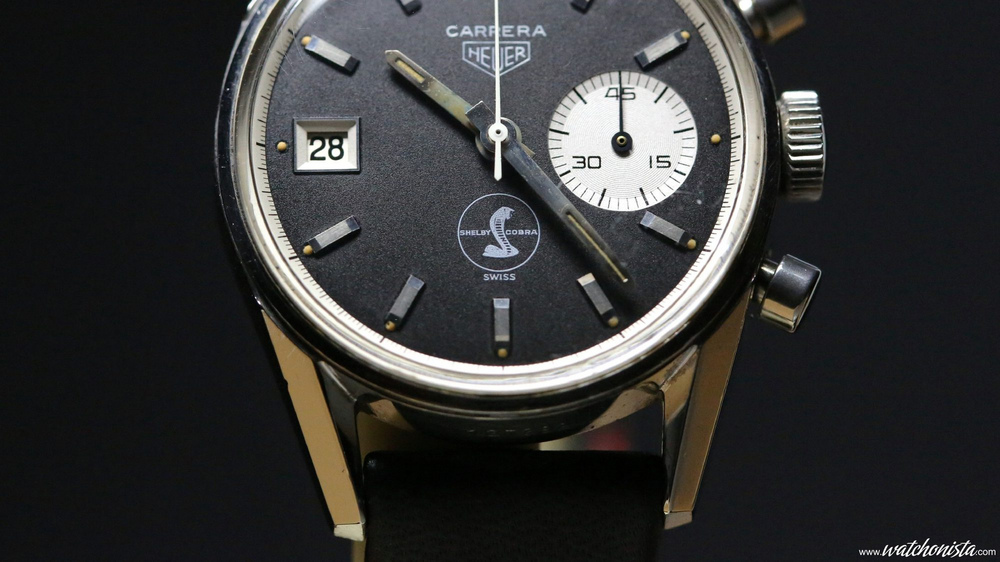
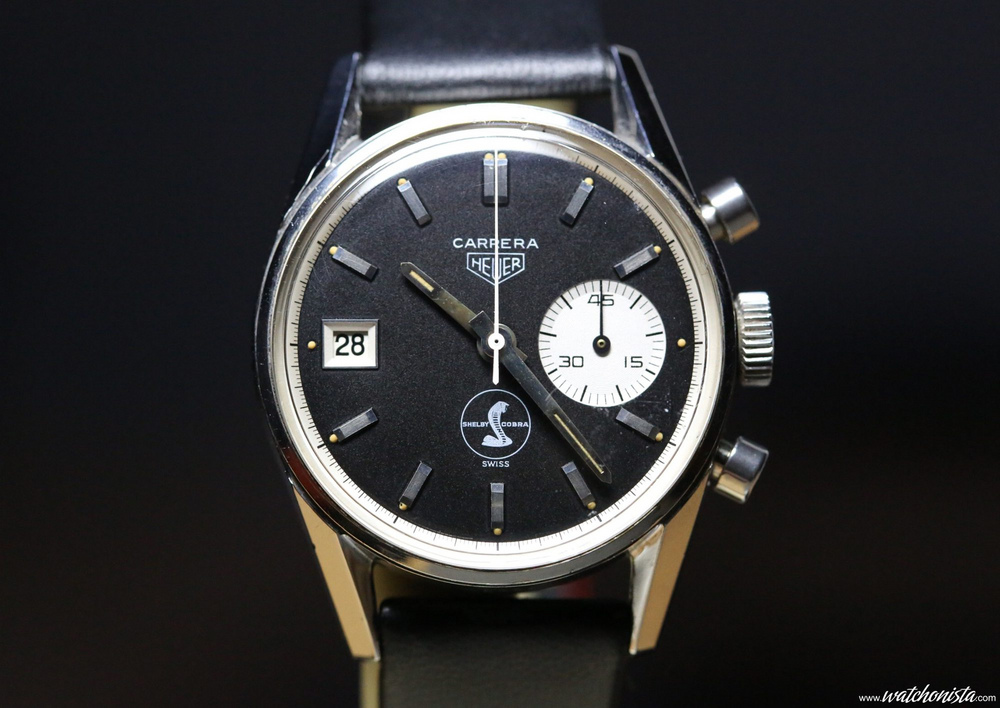
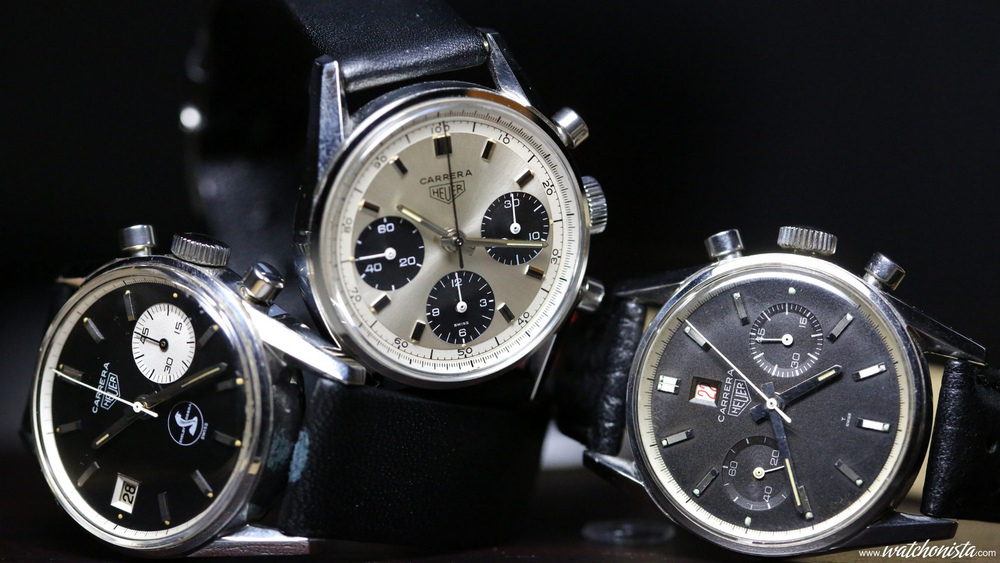
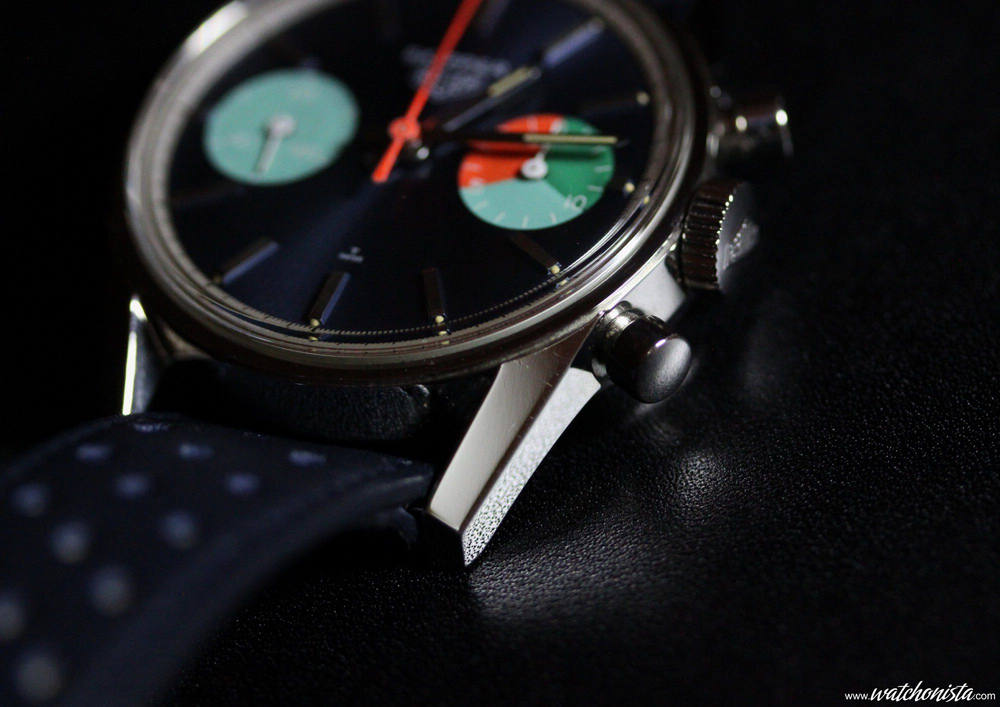
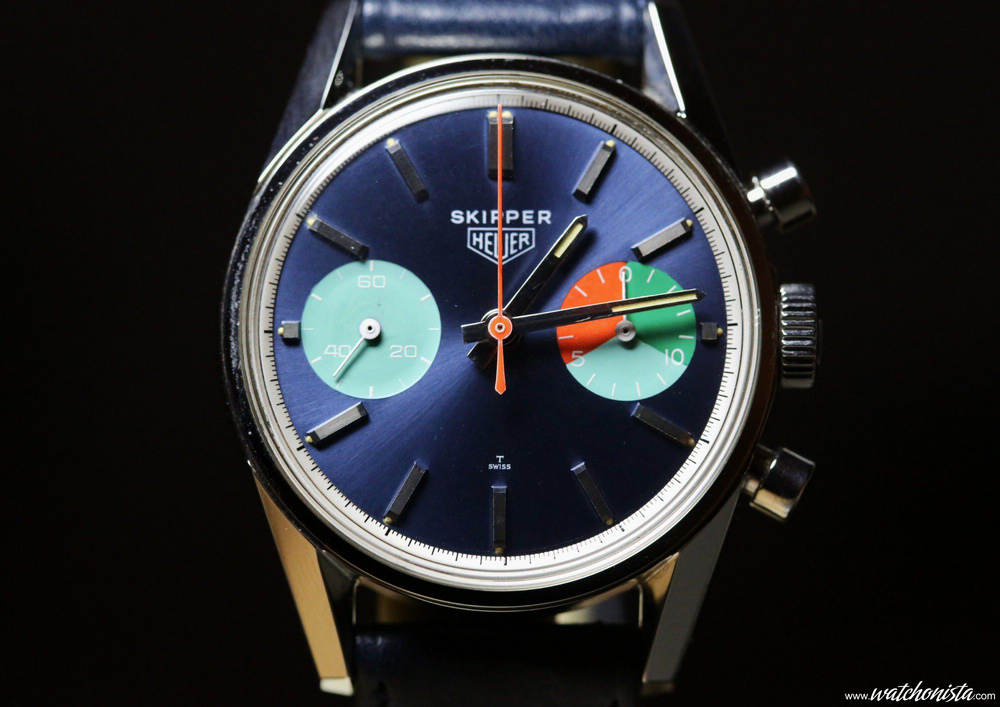
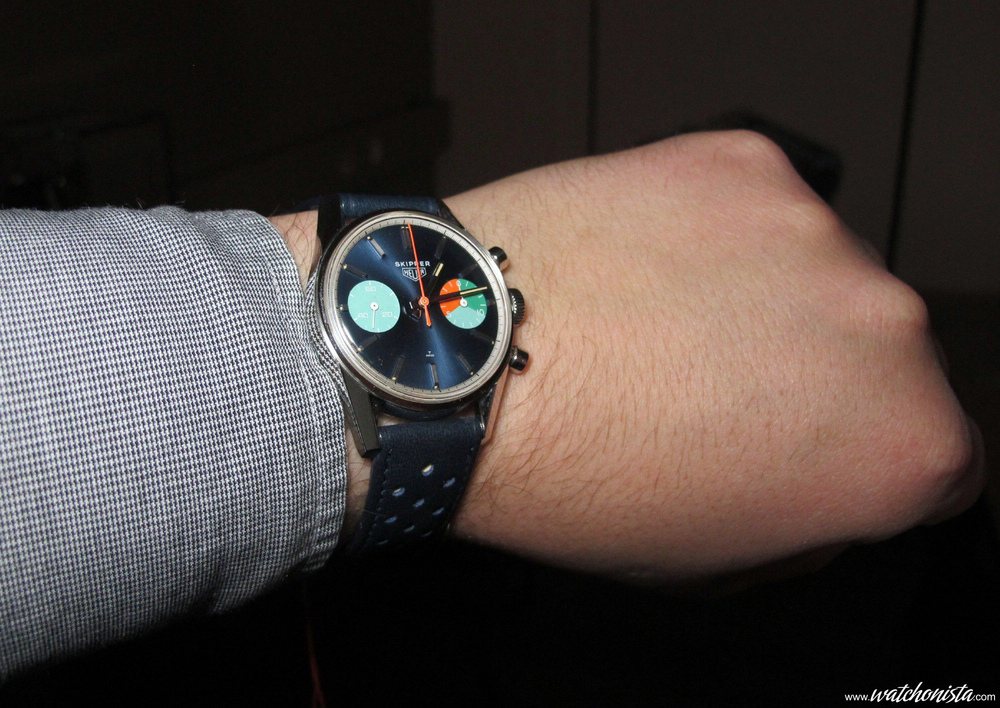
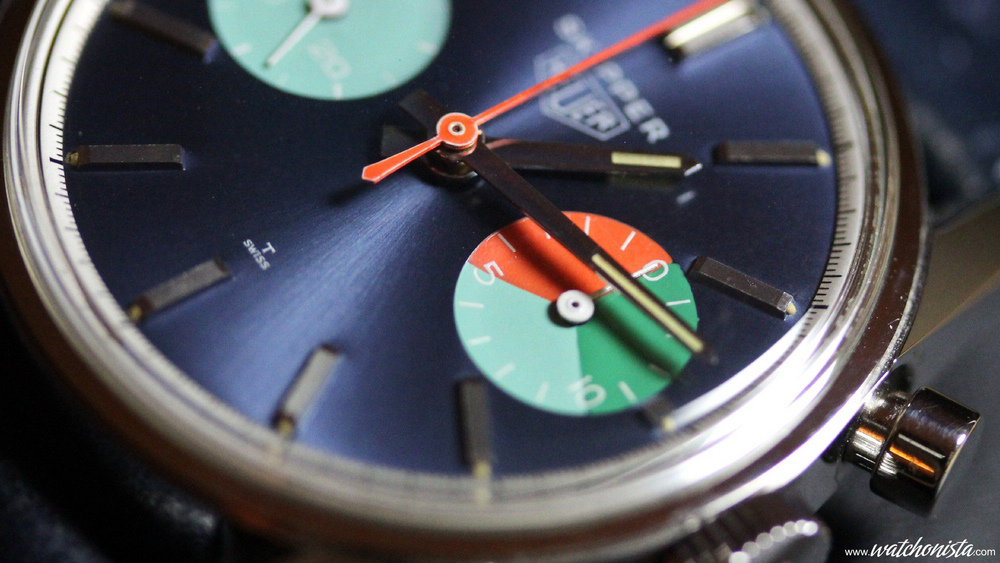
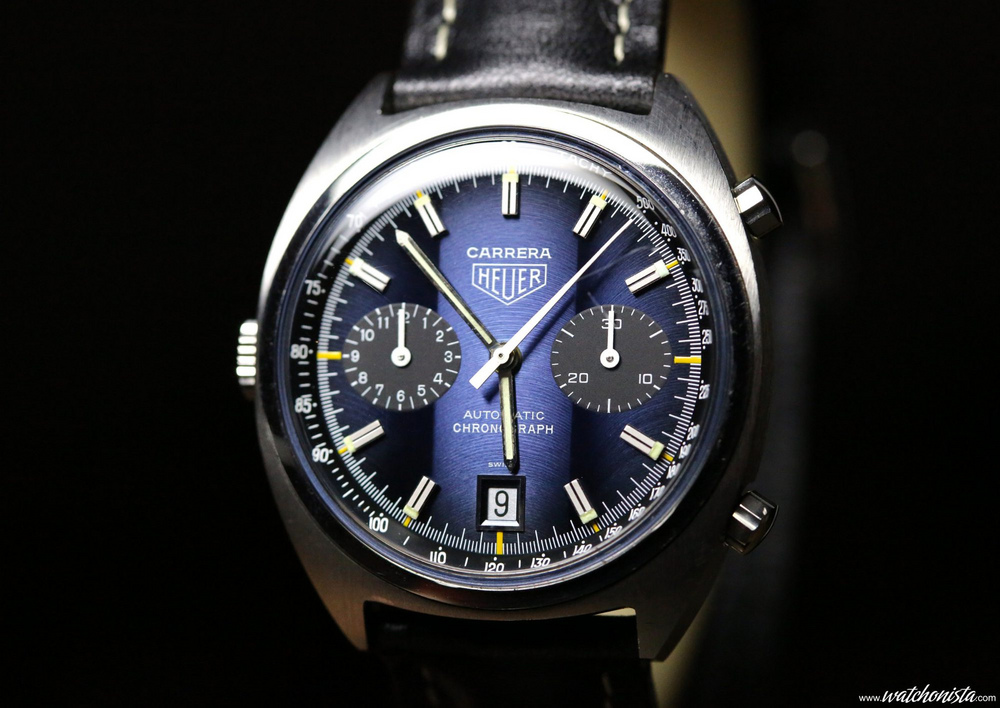
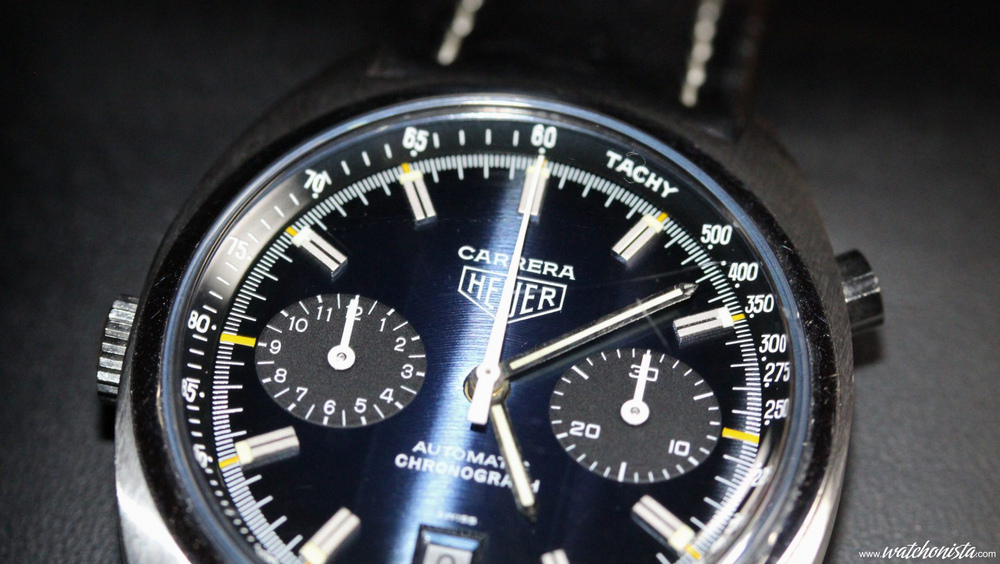
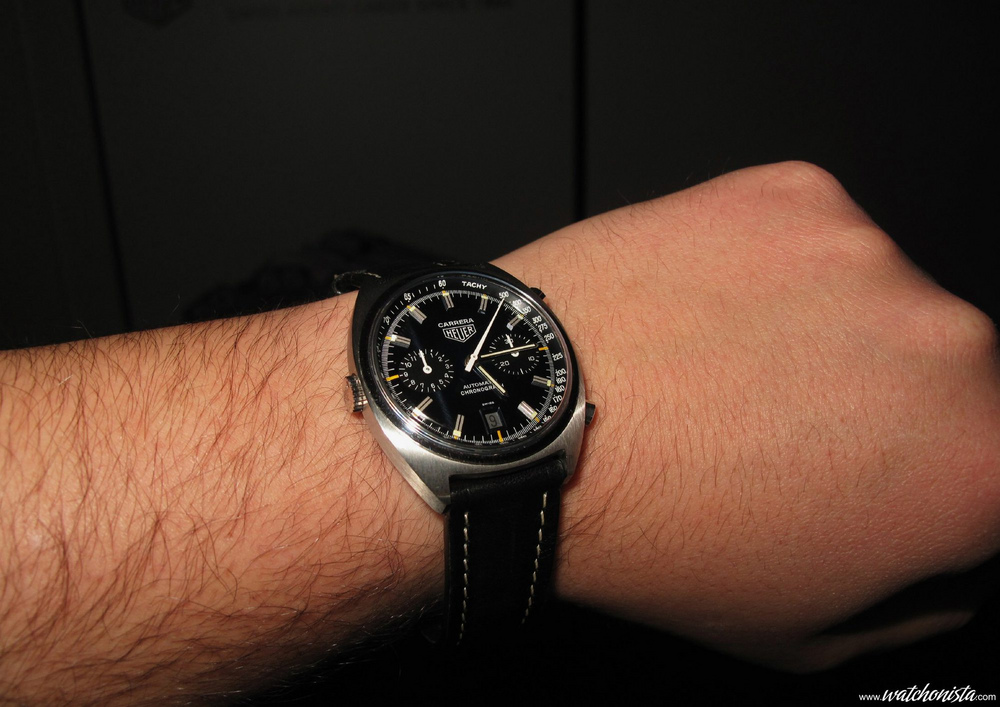
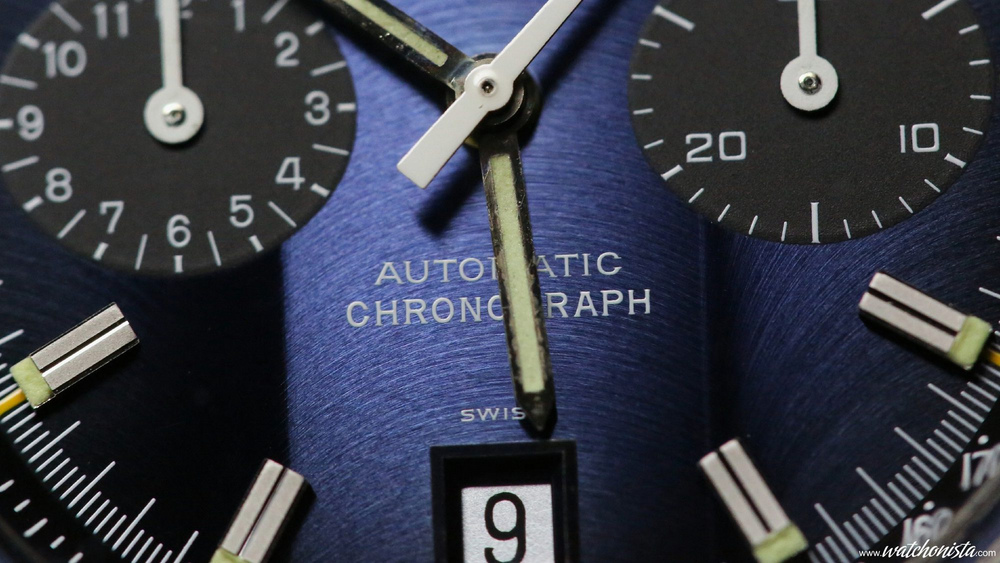
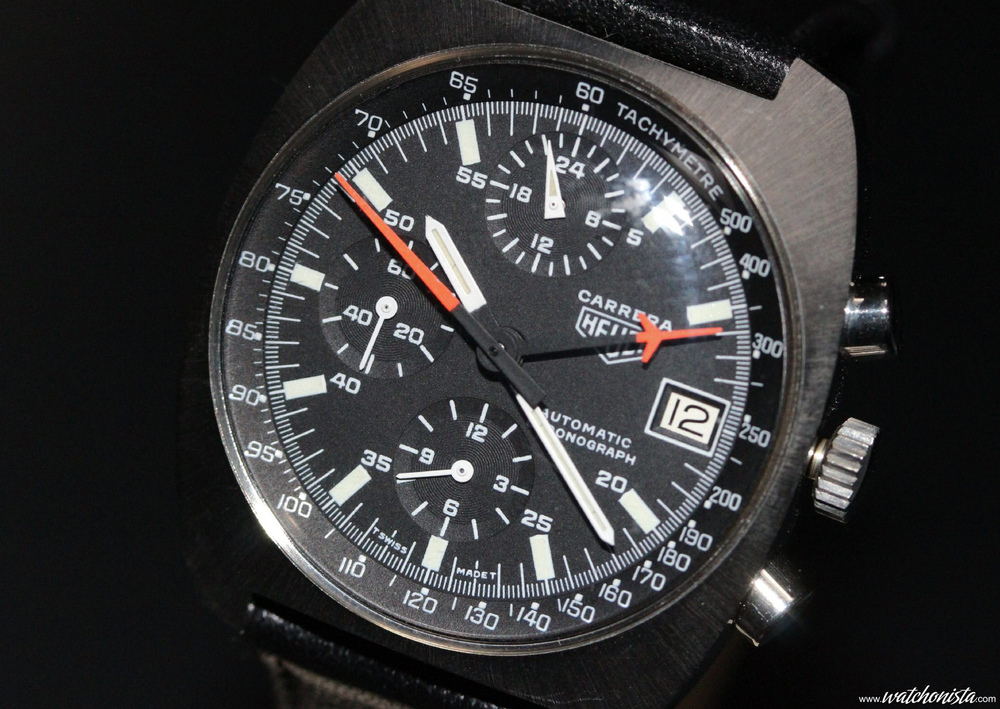
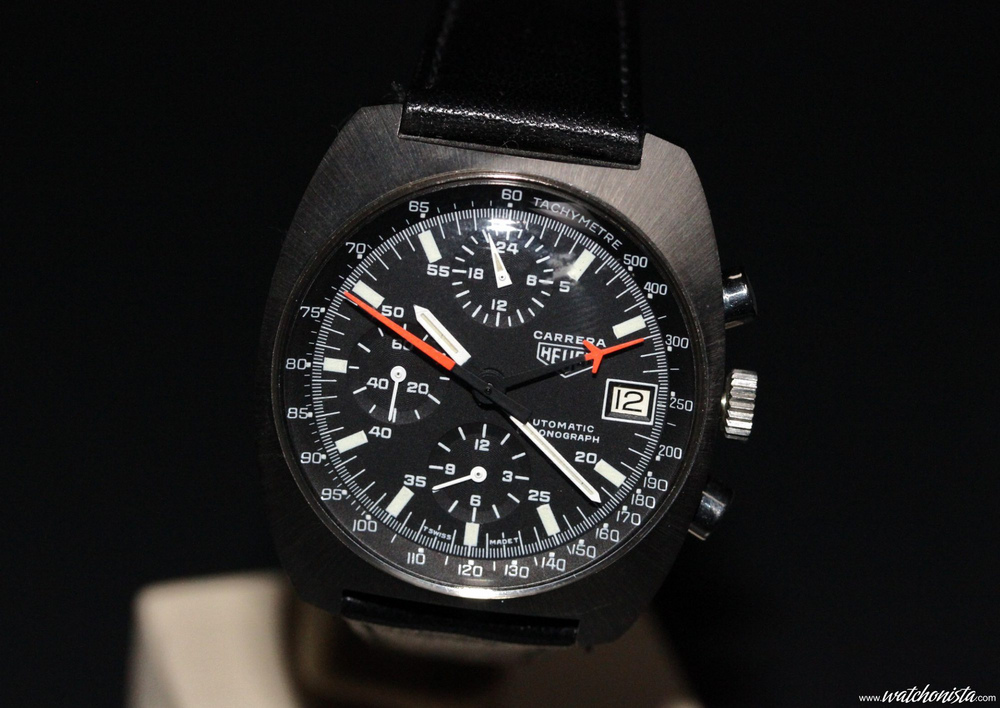

 Responder con cita
Responder con cita